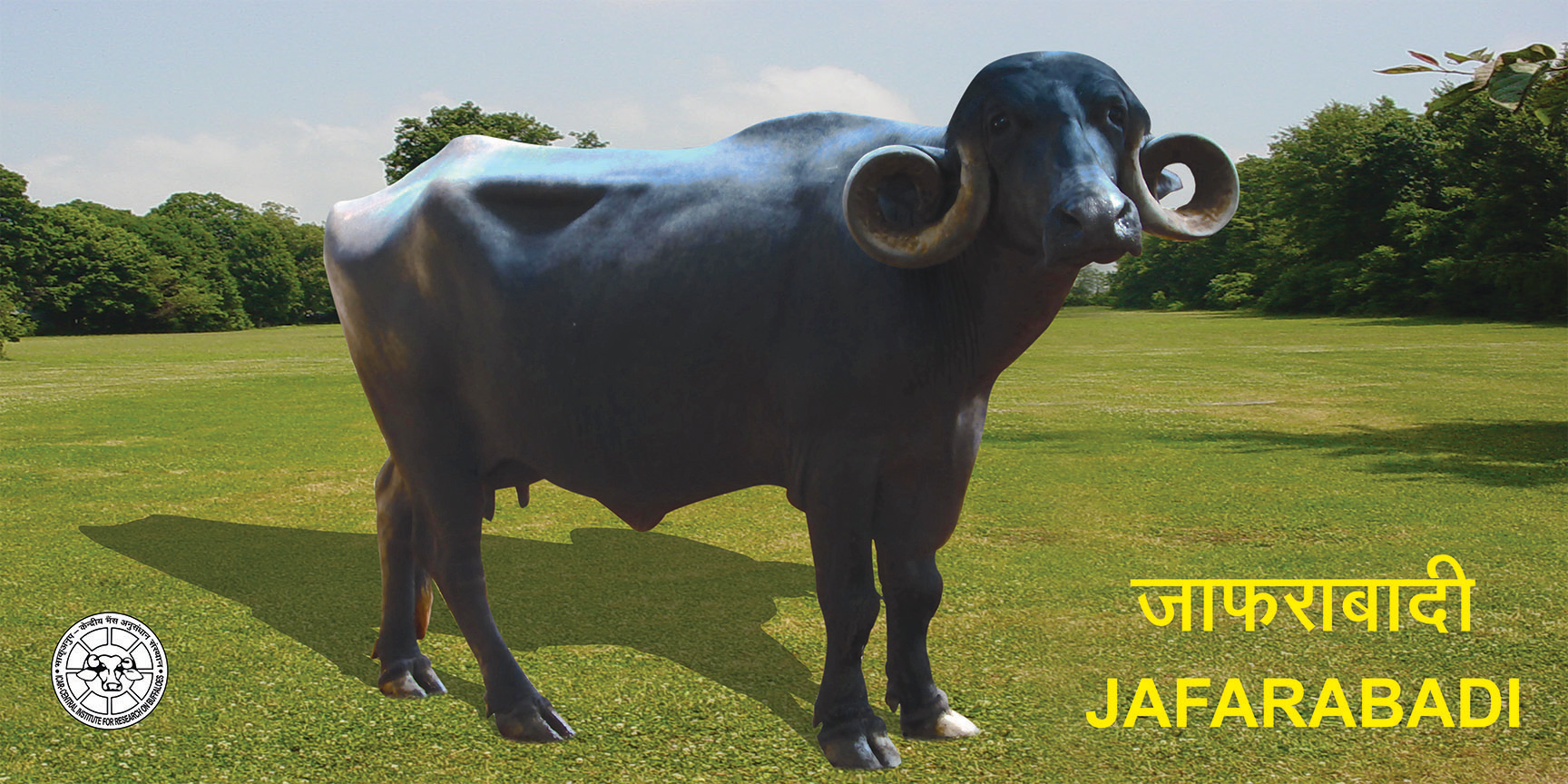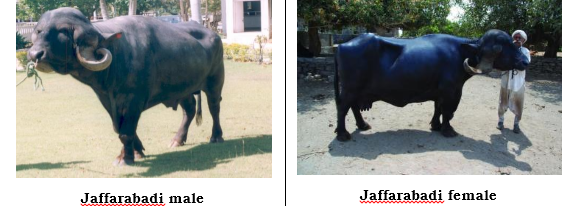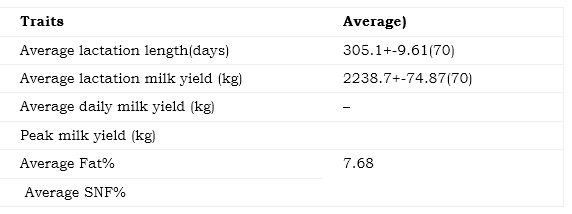Jaffarabadi Buffalow
Back
Jaffarabadi :

• Jafarabadi buffaloes are good milkers and thrive well on natural grazing. These buffaloes characteristically differ from other breeds mainly in terms of kilo fat. They are very efficient in the conversion of roughages into milk with a high butter fat content.
• Males are good draught animals for hauling heavy loads.
• Jaffarabadi is the heaviest of all the Indian breeds of buffaloes.
• It is also called as Bhavnagri, Gir or Jaffari. The breed is named after the town of Jaffarabad. These buffaloes are found in large numbers in this area, especially in the Gir forest area which is also inhabited by the famous Indian lion.
• The main native tract of Jaffarabadi buffalo is Saurashtra region of Gujarat especially areas in and around Gir forest viz., Junagarh, Bhavanagar, Jamnaagar, Porbandhar, Amreli and Rajkot districts.
• Jaffarabadi buffaloes are distributed approximately in an area of 64,339 square kilometres excluding the Kutch region. Soil in the breeding tract is salty clay to clay and typically medium black, with high water holding capacity. Climate in general is tropical monsoon. Rain is common during June to September and the annual rainfall ranges from 50 to 100cm.

Important characteristics
Body color
The usual colour of the animals is black but few animals having grey colour or white spots on forehand, feet and tail switch are also seen.
Horns
The horns are inclined to droop on each side of the neck and then turn up at the tips, the curls being not as tight as in the Murrah breed.
The horns usually emerge out by compressing the head, go downward sideways, upward and finally forming a ring like structure.
Marking
Rarely white markings on forehead, feet and tail switch may be there.
Eye
Horns makes eyes to look small, termed as sturdy eye, and especially in males, sometimes it leads to blindness.
Tail
Medium in size
Body
The adult Jaffrabadi animals have usually long massive and comparatively compact and fat body.
Head
Head is big and massive. Forehead is prominent being convex in 86.42% adult animal. The bone of forehead is wide and covers the eyes partially to give characteristic “Sleepy Eyes” appearance, especially in adult males.
Neck
Neck is broad and thick
Ear
Ears are long and horizontal.
Udder
Udder is well developed. Pendulous and round udders are found in almost equal proportions. Forequarter is slightly larger than the hindquarter.
Teats
Teats are mostly funnel shaped and have pointed tips. Milk vein is medium in size.
Production Traits

• The male animals weigh up to 700 Kgs (average) and female animals may weigh 620 kgs (average).
• The animal have a big dome shaped forehead with flat, thick, downwardly curved horns. The bulge of forehead sometimes covers eyelids also.
• Horns exhibit wide variation, but usually emerge out by compressing the head, go downward sideways, then upward and inward finally forming a ring like structure.
• Horn shape is peculiar in this breed. It makes eyes to look small - termed as study eye, especially in males.
• This breed is known for its ability to fight lions in Gir forest.
• The animals are generally black but some animals having white or grey tail switch are also seen.
• They are very good milkers. Average milk yield of the animals is 2239 kilo grams per lactation with a fat % of 7.7.
• The lactation yield ranges from 2150 to 2340 Kg.
For further details please visit the following:
http://14.139.252.116/agris/breed.aspx
https://www.buffalopedia.cirb.res.in/index.php?
